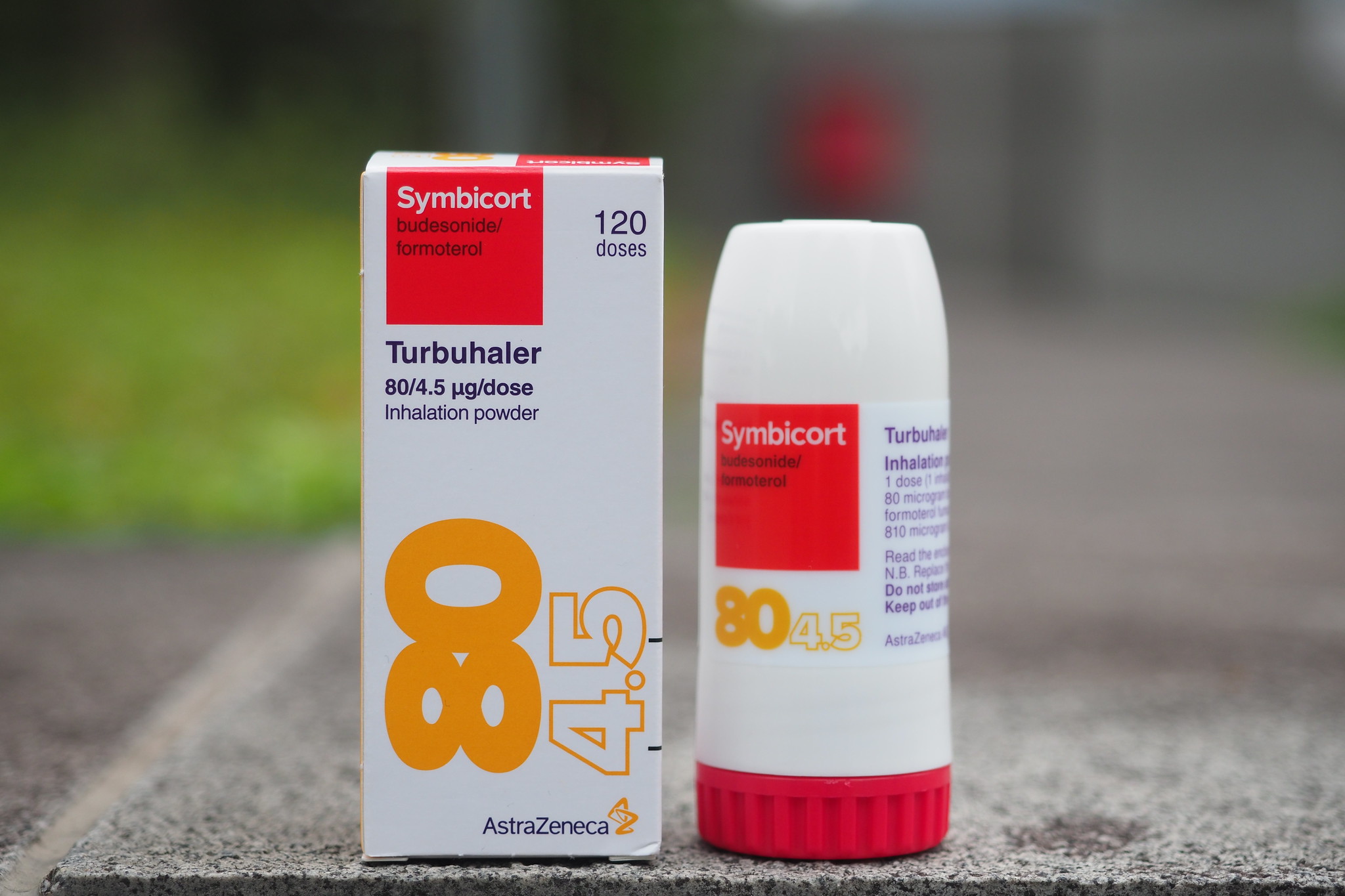Dr. Wynne Armand
I have had the privilege of practicing primary care for over 20 years at a community health center in Chelsea, Mass. This vibrant city is the dignified home to a diverse and proud community. It is also home to a lower-income population, living in a historically red-lined zone with sweltering urban heat islands that routinely experience temperatures 6°F higher than the National Weather Service’s regional report. With overcrowded residential buildings sandwiched among numerous industrial factories, and subject to plane, highway, and shipping traffic, it is no surprise that Chelsea has one of the worst air quality metrics in the state. These factors surely contribute to Chelsea’s higher prevalence of and worse outcomes for asthma as compared to the state average.
Asthma is a disease with known disparities including more severe disease in both people of color and those with lower income status. Asthma also has clear associations with environmental triggers – air pollution, heat waves, thunderstorms, dust storms, and pollen season – many of which are increasing in frequency and intensity due to climate change.

While education about these environmental triggers goes a long way, asthma management for my patients relies on inhaler medications used as rescue therapy for acute asthma symptoms and as controller therapy for the prevention of asthma exacerbations.
As a physician, I look to evidence-based guidelines to buttress individualized asthma treatment plans. Clinical guidelines are typically created by a consensus of experts after reviewing high-quality scientific studies. For asthma, most clinicians in the United States will refer to the Global Initiative for Asthma guidelines, updated yearly, or the National Asthma Education and Prevention Program guidelines, last updated in 2020.
Both of these step-therapy asthma guidelines include an inhaled corticosteroid (ICS) to reduce airway inflammation used in combination with formoterol, a unique medication that has both quick onset and long duration of action. These medication properties lend ICS-formoterol to function as a rescue medication for acute symptoms, as well as a controller to prevent exacerbations.
Here lies a thorn in my side. Our current metered dose inhalers (MDIs) use propellants that are greenhouse gases (GHGs) with global warming potentials (GWP100) of 1,300-3,350. In the United States, the number of MDIs used in one year generates carbon equivalent emissions that outstrip those generated from driving 500,000 gas-powered vehicles for an entire year.
This means that the very medication I am prescribing to my patients to treat their asthma is also contributing to the climate crisis that leads to more intense environmental triggers for their disease and that is recognized by many as the greatest public health threat humans have ever faced.

There is a solution to this particular dilemma: dry powder inhalers, or DPIs.
As the world strives to reduce GHG emissions in alignment with the Paris Agreement, hospitals, health systems, and other health organizations have committed to reduce emissions and prepare for climate resilience, for example by signing the White House/HHS Health Sector Climate Pledge.
Transitioning to low-emission DPIs plays an important role in the health care sector’s pathway to net-zero emissions. This is because DPIs are inhaler devices that do not need propellants and thus do not contain GHGs, and they have a 20- to 30-fold lower emission footprint as compared to their MDI counterparts. In fact, The Joint Commission, the Agency for Healthcare Research and Quality, the American Medical Association, and the National Academy of Medicine all identify inhalers as a target for health care emissions reduction.
While some patients cannot use DPIs, like young children or patients with limited inspiratory force, the vast majority of patients can. Many other countries predominantly prescribe DPIs with similar if not better asthma outcomes. Other studies have demonstrated that patients, when taught how to use different inhaler devices, prefer multi-dose DPIs over MDIs.
While there are several medications available as DPIs in the United States, the two ICS-formoterol agents are only available as MDIs. Of the two, budesonide-formoterol appears more efficacious in trial data. Budesonide-formoterol has long been available as a DPI, the Symbicort Turbuhaler made by AstraZeneca, in many other countries including the United Kingdom, European countries, China, and Canada – but not the United States.

There are currently no ICS-formoterol DPIs available in the United States
The reasons for this inequity are not clear to me, given the known efficacy of Symbicort Turbuhaler, which was used in many of the clinical trials driving the asthma management guidelines and has long been in use in other countries.
Let’s be clear that AstraZeneca should be commended for its commitment to “embedding sustainability into everything [they] do – from the lab to the patient.” AstraZeneca positions itself as “a responsible, ethical global company...tackling the biggest sustainability challenges of our time, including the climate crisis, biodiversity loss, health equity, and health system resilience.”
These values are in keeping with AstraZeneca’s partnership with Honeywell to produce novel propellants with lower GWP for MDIs, with the aspiration to fully transition its entire MDI portfolio to novel propellants in 2030 if they pass regulatory approval. However, these novel propellants will surely come at a high cost to insurers and patients throughout the duration of new patent terms, as we experienced in the past with the transition from chlorofluorocarbon (CFC) to hydrofluoroalkane (HFA) propellants in 2008. And this venture should not come with the tradeoff of withholding the Symbicort Turbuhaler from the U.S. market. Our patients and our nation deserve expeditious access to this proven and recommended asthma therapy via a device with low GHG emissions – that without doubt would be more affordable. But AstraZeneca's 2023 CDP report suggests that the company's revenue concerns outweigh their climate concerns, noting that “loss of product exclusivity through patent expiration currently poses a much greater risk to revenue than climate-related risks…”
Our patients and our nation deserve expeditious access to this proven and recommended therapy via a device with low GHG emissions – that without doubt would be more affordable.
Cost aside, should these novel propellant-MDIs be approved, it is unlikely they will be associated with lower GHG emissions than the Turbuhaler; prior studies demonstrate a lower manufacturing climate footprint of DPIs as compared to MDIs, even without the propellant.
The environmental impact of DPIs is even smaller compared to MDIs if we also take into consideration plastic spacers, which, while recommended for use with MDIs to improve the delivery of the medication to the lungs, are not needed for DPIs. Yet, another environmental concern is that the novel propellent HFO-1234ze will potentially yield per- and polyfluoroalkyl substances (PFAS), also known as “forever chemicals” – toxic chemicals we need to limit.
It is for these reasons that I signed an open letter, along with hundreds of health professionals and concerned citizens in addition to health and other organizations, appealing to AstraZeneca to make Symbicort Turbuhaler DPI available in the United States.
Signal your support
Join health professionals, concerned citizens, and organizations in their appeal to AstraZeneca to bring the Symbicort Turbuhaler DPI to the United States.
AstraZeneca has an opportunity to reaffirm its commitment to corporate responsibility and demonstrate leadership and equitable environmental stewardship by bringing the Symbicort Turbuhaler DPI to market in the United States. By taking such action, AstraZeneca can uphold its values: following science, putting patients first, and doing the right thing.
Only then will I feel that we are on the same team, with shared goals of reducing health sector GHG emissions and improving the lives of our patients with asthma, a disease already riddled with disparities. Only then will I feel supported in my ability to provide the best, most affordable care to my patients without further contributing to the climate crisis that ultimately does them harm.
Learn more about the climate impact of inhalers:
The cruel irony of inhalers that make climate change worse
Dr. Wynne Armand is an internal medicine physician at Massachusetts General Hospital, assistant professor at Harvard Medical School, associate director of Mass General’s Center for the Environment and Health, and contributing editor at Harvard Health Publications. Her opinion does not necessarily reflect the position of Mass General Brigham. She is on the board of directors for Greater Boston Physicians for Social Responsibility.
Acknowledgments: The author would like to thank Dr. William Feldman, Dr. Gregg Furie, and staff at Health Care Without Harm for their constructive feedback, valuable suggestions, and insightful comments during the writing of this blog.